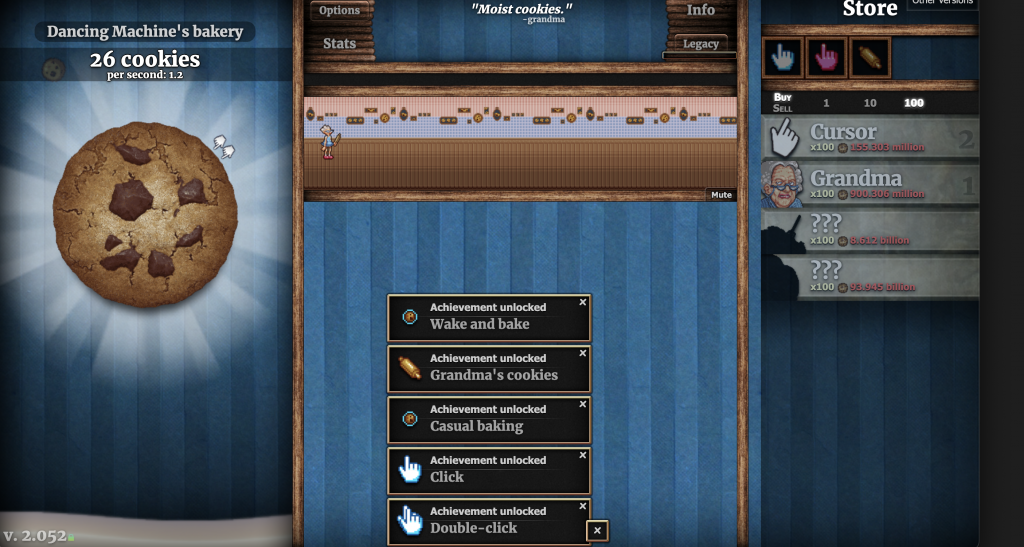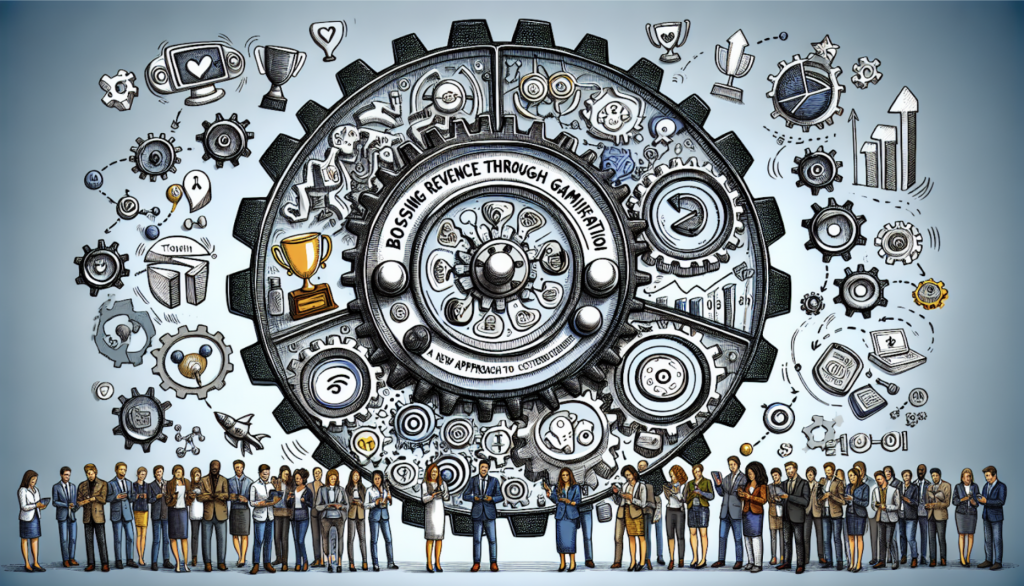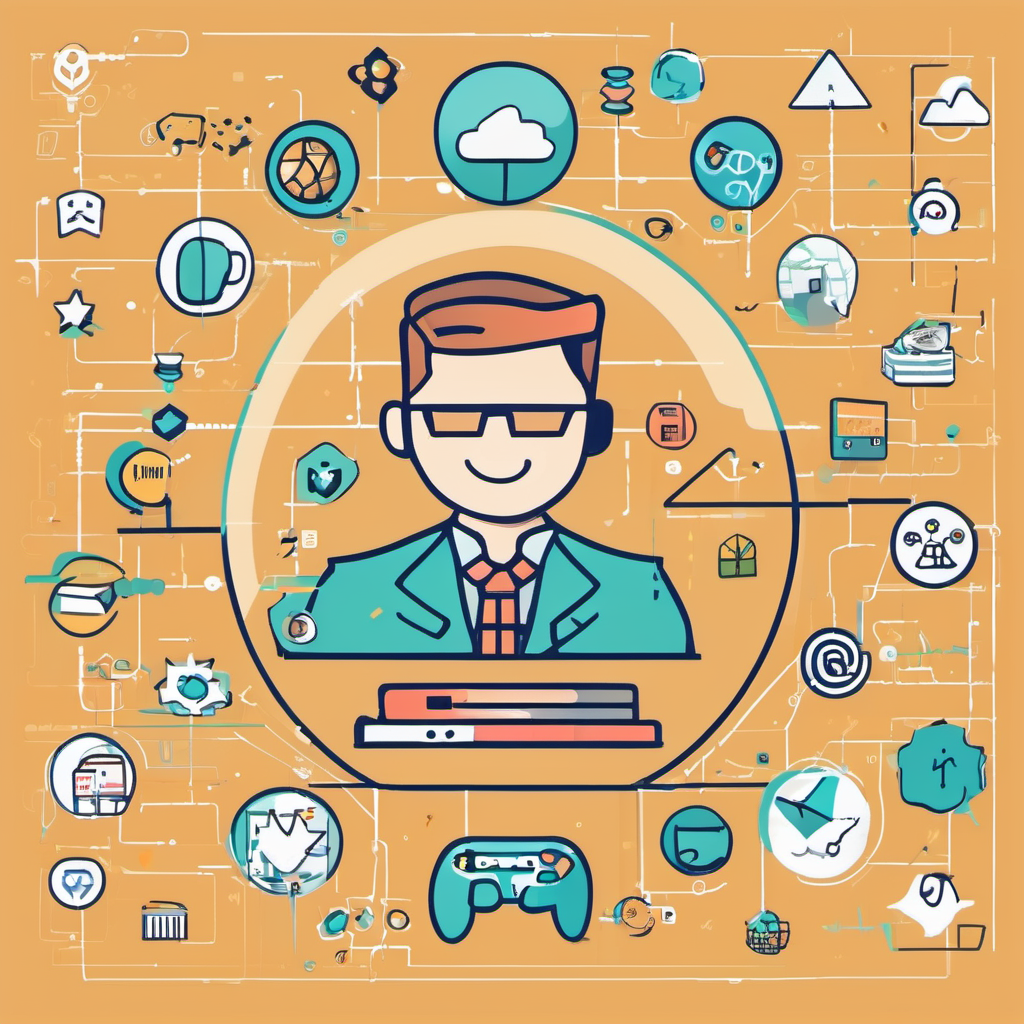Just 4 months after this Forbes article breaking news that Monopoly Go is “Generates $1 Billion In Revenue In 7 Months” another article, by GameStop released news that they made $1.5 Bilion of profit so far, while spending about $500 milions dollars on marketing – in just 10 months since its launch!
if we look closely into it (apple link, android link), this game doesn’t have much “game” in it, it is just filled with behavioral psychology patterns and gamification mechanics, making it a great example of applied product psychology that made financial success!
The commercial success of Monopoly App: A case study in profit-driven gamification design

The Monopoly app, developed by Scopely in collaboration with Hasbro Inc., has quickly become a prime example of profit-driven gamification design, launching globally on April 15, 2023, and experiencing remarkable commercial success [1]. Monopoly Go has not only generated over $2.6 million in revenue within the first two weeks but has also achieved over 20 million downloads in its first month, topping charts in the App Store and Play Store across Tier-1 Western countries [1] [2]. Its success is attributed not only to the iconic Monopoly intellectual property but also to its innovative core loop, additional features designed to enhance engagement, and a strategic user acquisition strategy, bolstered by Scopely’s recent acquisition by Savvy Games Group for $4.9 billion [2].
This case study explores the intersection of gamification, product psychology, and behavioral design as fundamental elements contributing to the Monopoly app’s success. By examining how Monopoly Go has effectively utilized gamification strategies to captivate and retain its audience, the article sheds light on the psychological aspects driving user engagement and discusses the implications for marketers looking to implement gamification in their strategies [2].
“Cookieclicker” – gamification essentials

The concept of cookie clicker was “in theory” too simple to work.
Complex frameworks, gamification theories, splitting users into separate personas or groups are having hard time explaining why this concept worked – without a hero, without end-game, without motivation, rewards, leaderboards. How come?
This is why, at TDSOFT, we base our recomendation on the experiences, and not try to push “framework-driven” approach into our customers.
TDSOFT.COM – gamification design
This game makes, even the least interested players, click at least 100 times at the screen. The more your do, the more you get, the more points you earn, the more invested you are, the more sense of progress you have, the more you wish for the next “tier” that would make your clicks even more ‘valuable’.
Monopoly go shares the same logic, just in a nicer, more engaging, more animated way.

What gamification lessons is Monopoly Go teaching us?
- Make rewards grow in time – this gives a sense of progression and accomplishment
- User interaction is friction – limit it to the easiest button press possible
- Switch learning to surprise – introduce product features as unlocked rewards rather than enabling them all at once
- Rewards? Make it rain, literally. Money confetti seems to be doing the job
- Big map? Not needed, player can run in a circle to make $1.5B in less than a year…
- Monetization? After a solid 15 minutes at least
There are many more take-aways, and in general, this game is a great source of ideas – having spent so much money on user testing, we can be assured that the current implementation that we can observe is one of the top-winning variants.
Gamification meets behavioral psychology and…
…behavioral product psychology wins. There are great, playable games and they reach a certain audience. Monopoly Go will never become Minecraft or Baldur’s Gate 3 – both global success stories. But it does teach us a lesson about human nature. The user interface in Monopoly Go is much easier to translate into product design than in more typical games.
This is why it is so important to occasionally dive into the world of the most popular hyper-casual games, to remember once again what factors are driving user attention and can be translated into any other product on the market.
Looking for good gamification in your product design?
Understanding Gamification in Marketing
Gamification in marketing has transformed traditional engagement strategies by injecting the fun and addictive elements of games into marketing campaigns. This innovative approach not only captivates users but also encourages them to interact with the brand on a deeper level, driving conversions and bolstering brand loyalty. Below are key components and real-world examples that illustrate the power and versatility of gamification in marketing:
- Core Elements of Gamification:
- Points: Serve as a quantifiable measure of achievement.
- Badges: Visual symbols of accomplishments.
- Levels: Indicate progression and unlock new challenges or rewards.
- Virtual Currency: Can be used for purchases within the game or to access special content.
- Leaderboards: Foster competition by displaying user rankings.
- Countdowns & Progress Bars: Create urgency and visually track progress towards a goal [6].
- Real-World Examples:
- KFC’s “Shrimp Attack” Mobile Game: Engages users with brand-themed challenges.
- Under Armour’s “Steph IQ” Quiz App: Leverages celebrity endorsements to quiz users on basketball trivia.
- Starbucks Rewards App: Encourages repeat purchases through a points system and tiered rewards [3].
- Benefits of Gamification in Marketing:
- Increased Engagement: Users spend more time interacting with gamified content.
- Boosted Loyalty: Reward systems encourage users to return.
- Higher Conversion Rates: Engaged users are more likely to make a purchase.
- Valuable Insights: Gamification can provide data on user preferences and behavior [4].
Gamification is not merely about entertainment but a strategic tool that, when used wisely, can significantly enhance user engagement and conversion rates. It’s essential to design gamification elements that resonate with your audience, providing them with real value and an authentic experience. Personalization is key; understanding user motivations and tailoring the gamification strategy to meet their needs can make your marketing campaign stand out and foster a genuine connection with your brand [5].
Challenges such as the need for creativity, the cost of game development, and the resources required for designing, creating, and testing games should not be overlooked. However, when executed correctly, gamification marketing campaigns can significantly increase brand awareness, collect valuable customer data, and drive sales, making it a worthy investment for brands looking to differentiate themselves in the competitive digital marketing landscape [8].
The Psychology Behind Gamification
Exploring the intricate psychology behind gamification reveals how it effectively taps into fundamental human desires and behaviors, making it a potent tool in the monopoly app’s success. The principles of gamification are deeply rooted in psychological theories that explain why certain game elements are so engaging and motivating:
- Basic Human Desires: Gamification addresses several basic human desires, including:
- Recognition and reward
- Status and achievement
- Competition and collaboration
- Self-expression and altruism [9]
- Cognitive and Emotional Engagement: Key elements that facilitate this engagement include:
- Behavioral Insights and Motivation: Understanding how gamification influences behavior and motivation is crucial:
- The principle that individuals prefer avoiding losses over acquiring equivalent gains, which motivates users to continue engaging to retain their rewards [9]
- Gamification leverages both intrinsic (internal satisfaction and personal growth) and extrinsic motivators (rewards) to sustain user motivation [10]
- Incorporating social elements and fostering a sense of community taps into the inherent human desire for status and belonging [11]
Furthermore, the success of gamification in the monopoly app can be attributed to its ability to transform routine tasks into engaging experiences, rooted in psychological principles that foster growth, development, and a nurturing community. This approach not only enriches positive psychology by increasing overall happiness and life satisfaction but also builds resilience and a growth mindset, crucial components for enduring engagement and satisfaction [9] [10] [11].
Understanding these psychological underpinnings is essential for preparing and implementing effective gamification strategies. It’s recommended to have a solid grounding in the behavioral science of gamification, make participation voluntary to avoid diminishing performance, and consider constraints such as customer satisfaction scores. These insights underscore the importance of designing gamification elements that resonate deeply with users, ensuring sustained engagement and loyalty [12].
Case Study: Monopoly Go’s Marketing Success
The commercial triumph of the Monopoly Go app is a testament to strategic gamification and marketing. Here’s a closer look at the key factors contributing to its success:
- Strategic Gamification Elements:
- Core Loop and Retention Layers: Building on a proven core loop from successful games, Monopoly Go introduced well-designed retention layers that kept players coming back. This strategy was instrumental in maintaining user engagement over time [2].
- In-App Purchases (IAP) Monetization: The game’s IAP monetization strategy was carefully crafted to balance player enjoyment with revenue generation, ensuring that the game remained profitable without alienating its user base [2].
- Hyperlocal Marketing: A hyperlocal approach to marketing, with creative tailored to reflect the language and culture of each country, played a crucial role in making the game resonate with a global audience [17].
- User Acquisition and Revenue Generation:
- Aggressive User Acquisition: Scopely’s investment of nearly $500 million in marketing and user acquisition for Monopoly Go underscores the aggressive strategy that propelled the game to over 100 million downloads [15].
- Revenue Milestones: Achieving over $2 billion in revenue and becoming the highest-grossing IP mobile game in the world, Monopoly Go’s financial success is unparalleled. Notably, it generated around $130 million in December 2023 alone, marking its position as the world’s top-grossing game during that period [14] [15] [18].
- Community and Social Aspects:
- The game’s ability to foster a sense of community and belonging among players contributed significantly to its success. By integrating social aspects, Monopoly Go tapped into the inherent human desire for status and belonging, enhancing player retention and satisfaction [11].
In essence, Monopoly Go’s success story is a blend of innovative gamification, a solid retention strategy, and a meticulously planned marketing campaign. Its ability to attract and retain paying players, without the constant need for acquiring new ones, sets a new benchmark for survival in the competitive mobile market [14]. This case study highlights the importance of creating engaging experiences that encourage users to return daily, underscoring the challenges and costs associated with developing and marketing mobile games [15].
Implementing Gamification in Your Marketing Strategy
Implementing gamification in your marketing strategy can significantly enhance customer engagement, drive sales, and foster brand loyalty. Here’s how to effectively integrate gamification elements into your marketing efforts:
1. Gamification Marketing Techniques:
- Interactive Quizzes: Create engaging quizzes related to your brand or products. Keep them concise and offer instant feedback. Encourage participants to share their results on social media for broader reach [4].
- Virtual Treasure Hunts: Utilize Augmented Reality (AR) to create an immersive experience. Set up a treasure hunt that guides users through various stages, offering rewards upon completion. This technique not only entertains but also educates users about your products or services [4] [20].
- Spin-to-Win Games: Add a game to your website where users can win discounts or prizes. This can be an effective way to collect email addresses while providing value to your visitors. Promote the game through social media and email newsletters to drive traffic [4].
2. Loyalty Rewards with Gamified Elements:
- Points System: Implement a points system where customers earn points for various interactions with your brand, such as purchases, reviews, or social media engagement [4].
- Levels and Badges: Define different levels of loyalty with corresponding rewards. Design visually appealing badges for each level to visually symbolize achievements and encourage progression [4].
- Personalized Avatars and Virtual Spaces: Develop a mobile app that allows users to create personalized avatars and navigate through virtual spaces. This can be a platform for hosting events, introducing new products, and more, making your brand’s interaction more engaging and personal [4].
3. Strategic Implementation Steps:
- Identify Objectives: Clearly define what you aim to achieve with your gamification strategy. Whether it’s increasing sales, boosting engagement, or enhancing brand loyalty, having clear objectives is crucial [21].
- Understand Your Audience: Analyze your target audience’s needs and preferences. Gamification should empower users and provide them with value, making understanding their desires essential [5].
- Choose Suitable Incentives: Decide on the rewards for participation. Options can range from digital badges to virtual currency or even physical products, depending on what resonates most with your audience [20].
- Set SMART Goals: Ensure your goals are Specific, Measurable, Achievable, Relevant, and Time-bound. Integrate these goals with your broader business objectives to align your gamification strategy with your company’s vision [21].
Implementing gamification in marketing requires a thoughtful approach, understanding of the target audience, and alignment with business goals. By employing these strategies and techniques, brands can create compelling, interactive experiences that drive engagement and loyalty [19] [20] [21].
Measuring the Impact of Gamification
To effectively measure the impact of gamification, it’s essential to establish clear and relevant metrics that align with your strategic objectives. Here’s a breakdown of the types of metrics you should consider:
1. Define Your Goals and Metrics [23] [24]
- Align gamification goals with learning design and strategy: Ensure that the objectives of your gamification efforts are in sync with your overall marketing or educational strategies.
- Use a combination of quantitative and qualitative methods: This approach allows for a comprehensive understanding of the impact, capturing both statistical outcomes and user experiences.
- KPIs should be defined to measure success: Identify Key Performance Indicators (KPIs) that are relevant to your gamification strategy and compare them before and after implementation to gauge effectiveness.
2. Collect and Analyze Your Data [5] [22] [23]
- Engagement Metrics:
- Productivity Metrics:
- Return on Investment Metrics:
- Adoption Metrics:
3. Learn and Improve Your Gamification [5] [23] [24]
- Continuous Learning Process: Measuring the impact of gamification is an ongoing activity that requires regular monitoring and adjustment of your strategy [5].
- Test and Experiment: Don’t hesitate to try different game elements and mechanics to see how they influence user behavior and motivation [5].
- Use Analytics and Dashboards: Collect and visualize data to monitor engagement and retention patterns, identifying both strengths and weaknesses in the gamified design [23].
- Use a Control Group: Comparing results with a control group that received no or different interventions can provide valuable insights into the effectiveness of your gamification strategy [23].
By following these steps, you can ensure a rigorous and insightful assessment of your gamification strategy, enabling you to make informed decisions and optimize for maximum impact on user engagement, satisfaction, and overall business objectives.
Conclusion
Through this article, we veered deeply into the essence and impact of gamification in transforming marketing strategies and enhancing user engagement. The success story of the Monopoly app, underscored by its strategic gamification and marketing approaches, not only carves out a blueprint for leveraging digital platforms to foster brand loyalty and increase revenue but also highlights the pivotal role of understanding human psychology in game design. The intertwining of behavioral science with gamification elements presents an opportunity for brands to craft experiences that resonate on a deeper, more personal level with their audience, thereby achieving remarkable commercial success and user retention.
However, it’s imperative for brands and marketers to acknowledge the challenges and costs involved in implementing these strategies effectively. Crafting a gamified experience that is both engaging and profitable requires a nuanced understanding of audience preferences and a delicate balancing act between monetization and user satisfaction. For companies looking to explore the vast potential of gamification in their digital marketing efforts, partnering with experienced professionals, such as TDSOFT Gamification Services, can provide the expertise necessary to navigate these complexities. By doing so, brands can not only ensure that their gamification strategies are well-designed and impactful but also drive meaningful engagement that transcends traditional marketing efforts.
FAQs
Q: What is the effectiveness of gamification?
A: Gamification has proven to be highly effective, particularly in educational settings. Studies have shown that gamification that incorporates challenges can boost student performance by up to 89.45% over traditional lecture-based learning. Overall, student performance has been seen to increase by 34.75% due to gamification.
Q: How does game theory relate to gamification?
A: While gamification involves the application of game elements in non-gaming contexts, game theory is focused on the economic modeling of human behavior in decision-making processes. When combined, these two concepts provide a robust framework for enhancing the design of user experiences and facilitating change.
Q: What impact does gamification have on customer acquisition?
A: Gamification has a significant impact on customer acquisition, with evidence showing increases as high as 700%. Brands like Walgreens, eBay, and Threadless have seen boosts in engagement and loyalty by 30% through the use of gamification strategies.
References
[1] – https://appgrowing.net/blog/en/monopoly-go/
[2] – https://medium.com/@muhammedcoskuny/monopoly-go-has-been-storming-top-charts-but-how-f20bd5299043
[3] – https://blog.hubspot.com/blog/tabid/6307/bid/32993/how-real-businesses-are-using-gamification-to-spice-up-their-marketing.aspx
[4] – https://mailchimp.com/resources/gamification-marketing/
[5] – https://www.linkedin.com/advice/3/how-do-you-measure-impact-gamification-your-users
[6] – https://www.bazaarvoice.com/blog/everything-you-need-to-know-about-gamification-marketing/
[7] – https://smack.agency/blog/marketing/gamification-examples/
[8] – https://popupsmart.com/encyclopedia/what-is-gamification
[9] – https://www.learningguild.com/articles/2381/five-psychological-principles-fueling-gamification/
[10] – https://mooremomentum.com/blog/use-the-psychology-of-gamification-to-level-up-your-life/
[11] – https://medium.com/@masoomabalouch581/psychology-of-gamification-f33339783e8c
[12] – https://blog.pixentia.com/7-steps-to-measuring-the-impact-of-gamification-in-enterprise-learning
[13] – https://elofun.com/gamification-case-study-mcdonalds-monopoly-game/
[14] – https://gameworldobserver.com/2024/01/15/monopoly-go-is-currently-a-big-winner-generating-more-than-4-million-daily
[15] – https://www.moloco.com/case-studies/scopely-monopoly-go
[16] – https://www.gamefile.news/p/scopely-monopoly-go-2-billion
[17] – https://filmstories.co.uk/news/monopoly-go-free-to-play-mobile-game-spent-500m-on-marketing/
[18] – https://sensortower.com/blog/monopoly-go-is-the-king-of-ip-in-mobile-games
[19] – https://segmentify.com/blog/gamification-marketing-guide/
[20] – https://spinify.com/blog/complete-guide-to-gamification-in-marketing/
[21] – https://www.marketingprofs.com/articles/2023/49682/gamification-in-marketing-strategy
[22] – https://www.crewhu.com/blog/how-to-measure-gamification
[23] – https://www.linkedin.com/advice/0/how-do-you-measure-impact-gamification-learner-engagement
[24] – https://centrical.com/resources/how-to-measure-gamification-roi-is-it-mission-impossible-2/
[25] – https://appfigures.com/resources/insights/20230421?f=3

